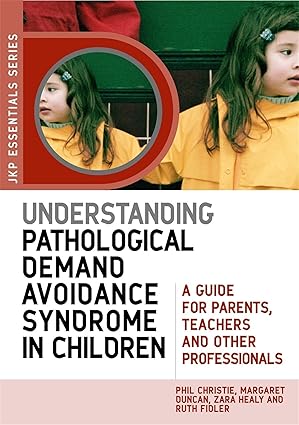Another book in the parenting thread: When the Naughty Step Makes Things Worse by Dr Naomi Fisher and Eliza Fricker.
The title describes the central theme of the book; some children simply don’t respond to the widespread, traditional punishment / reward method of parenting. If you try to put them on the Naughty Step they will refuse to go, and get ever angrier about it. As the authors highlight a motivated child has a higher stamina for opposing your parenting strategies than you have for executing them! You will typically have other things to worry about; a child can fully commit their energies to opposition.
They describe these children as “pressure sensitive” – they are made anxious when they feel under pressure to do something and their behaviour arises from this – finding ways to avoid the thing, elsewhere this is given a diagnosis of “pathological demand avoidance” (PDA). Their answer to pressure sensitive children is “low demand” parenting with the aim of widening the child’s “window of tolerance” for demands over a long period.
Fisher talks about how parenting was “invented” in the 1950s with the work of Baumrind and their demandingness/responsiveness model. It extends behaviourism, which sees animals trained by a combination of reinforcement (reward) and punishment, to the training (raising) of children with the addition of responsiveness which is trying to meet the needs of the child and being emotionally warm with them.
I sometimes wonder what fraction of animals refuse to be trained under the behaviourism model. When I reviewed Other Minds (all about octopuses) I read about efforts to measure the intelligence of three octopuses:
… two octopuses in their study put in some effort to carry out the tests presented whilst Charles insisted on squirting water at the experimenters and being otherwise uncooperative. It does make you wonder whether measures of animal intelligence are more a combination of willingness and intelligence.
The authors refer to behaviourism models of parenting, somewhat tongue in cheek, as Good Parenting(TM). It is relevant to highlight the contrast because much of the internal battle for a low demand parent is the opinions of others, and whether they are right: are we here because we are poor parents? what does my parenting look like to other people? What are people thinking? Largely the author’s prescription is to ignore these outsiders except where necessary (other family members and professionals with important roles).
Thinking about pressure sensitive children it is easy to see how they struggle at school where systems of punishment and reward are becoming ever harsher. Furthermore in a classroom environment there is little scope for responsiveness. Therefore schools end up being strictly authoritarian environments which absolutely don’t work for a fraction of children, and greatly stress a further proportion. My experience of schools is that they have little appreciation or understanding of the existence of pressure sensitive children. Many of the children mentioned in the book have been pushed out of the mainstream school system, some are in special schools or home education.
After the preamble chapters talking about the group of children in question, and earlier models of parenting, The authors spend several chapters talking about different aspects of low demand parenting in practice, communication, behaviours, emotions, and screens. They are pretty positive about screens – highlighting that games like Minecraft offer pressure sensitive children a complex world which they control completely and often it is the only thing they will engage in. Most of the practices of low demand parenting are captured in acronyms – REACH, FLASH, JOIN UP. The core is to throw away your previous concepts of Good Parenting(TM) and seek a more equal relationship with your child (rather than trying to force them into conformance), join them with what they are interested in (for a while my wife and I played Fornite with our son), and focus on the necessary (sitting at the table eating healthy homecooked meals without your elbows on the table may be an ideal but sitting in front of the TV eating beige food is actually fine).
It is a bit difficult to judge the age group this book targets, much of the start feels like a discussion of younger children – at primary school and earlier but there are frequent mentions of children going into adolescence. One of the stories in the final chapter tracks that of my now 13 year old son almost exactly – apparently fine and doing very well in school until the demands of secondary school were overwhelming with an exit into online school.
There is a chapter on self-care for parents, a subject touched on earlier in the book in coping with the disapproving looks of other parents. This chapter uses techniques like radical acceptance, visualisation and mantras which I’m familiar with from counselling.
Despite being over 400 pages long When the Naughty Step… is an easy read. The text is broken up with Fricker’s cartoons, personal stories and various tables and exercises. Each chapter ends with a dialogue between Fisher and Fricker (which I found really useful), a bullet point summary and some suggestions for further reading.
I sometimes worry I have joined the cult of Fisher / Fricker, in common with many parents whose children have not been entirely straightforward to raise, I will enthusiastically recommend their books (and webinars). I think the core of their success is that they identify very clearly how our children are, when few others do, and reassure us that it is not the end of the world, when most are trying to convince us it is.


